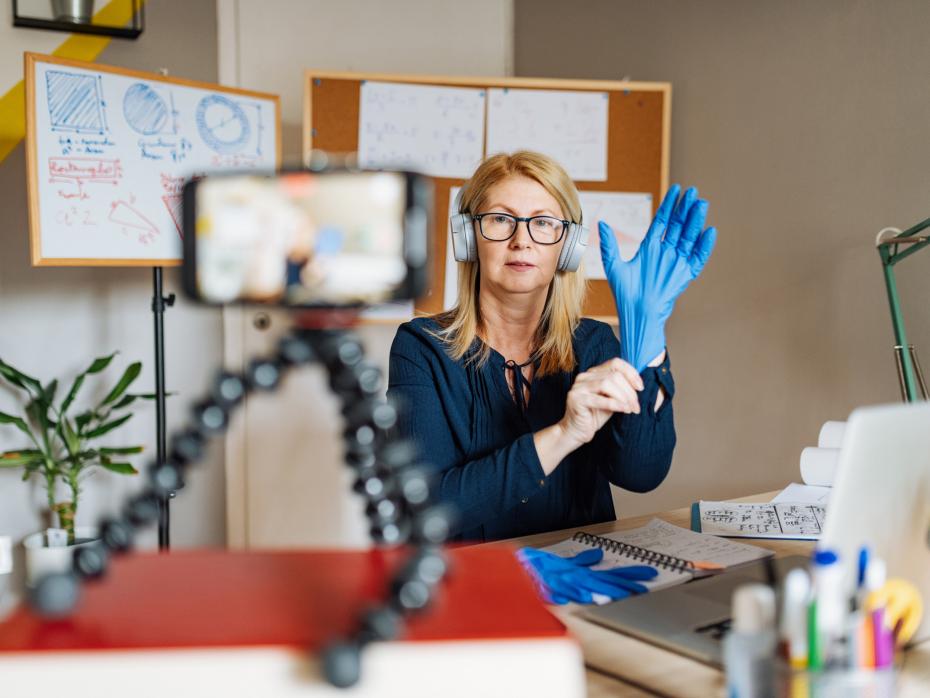Over the past 40 years I’ve attended dozens of talks about university education and how to improve the learning experience, most of them describing some new approach that transforms the success of the speaker’s students, either through the latest technologies or a “new” pedagogic approach. The aim of this article is to identify the three things that, in my opinion, have the biggest impact on successful teaching and learning – and all of them focus more on how the teachers learn than how the learners learn.
At the outset, I must make it clear that using the latest technologies and up-to-date pedagogic approaches should really be core expectations of university education – only a few “board-and-chalk” lecturers get good student feedback, although it is still possible. But the one thing that is common to all outstanding teachers is that they listen to and engage with their students. This is not the same as student-based learning or getting good student feedback in questionnaires – it is taking the time and effort to use all kinds of interactions to support students, to let them know you care and to pick up quickly what is working and, more importantly, what they are struggling with.
- Successful classroom discussions begin long before anyone speaks
- Using the ‘36 questions to fall in love’ to revolutionise group work
- What I learned from spending three years researching TikTok
Crucially, there isn’t a “best” way to teach. At one of my universities, we’d decided to set aside 15 minutes at the end of a tutorial for the students to complete an end-of semester satisfaction survey of their lectures and lecturers. “Professor X’s lectures were dire,” said one student out loud, “so boring.” Then another chimed in: “But have you tried revising from her notes? They were so easy to follow.” To which the first student replied: “I guess you have a point, but weren’t Dr Y’s lectures brilliant? I’ll take his course as an advanced topic next year.” The second student countered: “I agree his lectures were entertaining, but I struggled to make sense of the topic when I went back over it.”
In the end, following that conversation, both students upgraded the lecturer they’d criticised. And while both lecturers “could have done better”, the discussion helped the students appreciate that different styles of teaching suit different students.
Personally, I love teaching through problem-based learning, which provides some of the deepest learning when it goes well – but it can be challenging for tutors and students, some of whom really struggle in those group situations. Moreover, as Nina Powell and Rebekah Wanic point out in their excellent THE article, university education cannot be entirely about trying to please the students and get the highest feedback score. At levels 5 and 6, we have to be teaching concepts that require deeper engagement than bite-sized chunks of learning or fun activities – you cannot synthesise a challenging molecule or analyse a complex literary piece without a breadth of knowledge that has required slogging through quite a lot of “stuff” in order to acquire facts and context for an advanced analysis. Yet, of course, good educators engage with their students in such a way that they can accept the necessary hard work while also enjoying the variety of teaching styles that make learning enjoyable (usually).
Brilliant teaching is much more down to the lecturer than to following sound pedagogy or using innovative activities. Really good teachers are sufficiently in touch with their students that they develop materials in ways that the students enjoy and appreciate. So a lecturer who loves the latest apps and mobile media might develop their material to optimise those platforms, while other lecturers might use more traditional methods that students equally value because they add variety and play to the strengths of the teacher.
This leads to my second ingredient for high-quality teaching – you have to design it yourself, even if that means reinventing the wheel. I think the poorest lectures I gave came when I covered a colleague’s course for a year and used his notes for a topic that was pretty new to me. I certainly learned a lot, but my colleague’s style was so different from my own that I think the students were short-changed.
More recently, I heard about some excellent materials that had had a big impact on reducing the attainment gap for students of colour. The ideas were clearly transferable, and thus a few other universities tried using the same materials – but with much less success. There are several possible explanations for this. It could be that the testbed is necessarily with a group where big improvements are more easily achieved because the problem is especially acute. Perhaps it’s the differences in the “typical” characteristics of students between HEIs, or maybe the sheer enthusiasm of someone who is delivering “their own idea” inspires students.
I personally think that the latter, including the approach of distilling out the educational principle and adapting it to your own teaching strengths, is the most important factor – developing your own materials is crucial to being an excellent educator.
Which brings me to my third key factor. We must make absolutely sure that educators get the chance to share their ideas and listen to those of others. That’s where the teaching innovations come from. In this hectic, metric, online world we’re in, it’s so easy for the sharing of ideas to get squeezed out. So the one thing I’d say to heads of departments, deans, pro vice-chancellors of education and vice-chancellors themselves is: find ways to encourage all lecturers to be involved in coffee room (or, if necessary, Zoom) chats, peer review of different subjects, internal seminars and external conferences.
Plus, remember that the best interactions aren’t only about things that have been successful – thinking back over the dozens of educational lectures I’ve attended, the two presentations that stood out both described failure. The first concerned a fundamental approach to how students understand complex ideas (in chemistry, but the principle was generic), and the second was about peer learning. But, of course, the speakers had also engaged with students to understand what the problems were, had developed new, improved materials that the students really appreciated and had shared this at the conferences I attended – the three key ingredients for outstanding educators.
Patrick Bailey is emeritus professor at London South Bank University (LSBU). He was deputy vice-chancellor/provost at LSBU between 2014 and 2021 and is a National Teaching Fellow.
If you found this interesting and want advice and insight from academics and university staff delivered direct to your inbox each week, sign up for the THE Campus newsletter.




comment1
(No subject)